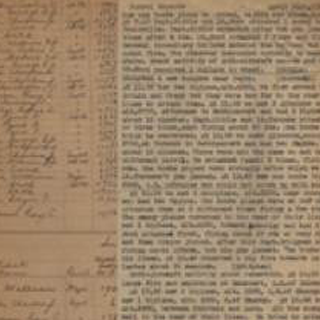
Logbooks of the 103rd Pursuit Squadron from World War I, recording day-to-day lives and combat details of the Squadron members. One from early March, 1918 to December 15, 1918, the other dated from February 19, 1918 to March 19, 1919.

In one of our collection rooms we discovered a hidden artifact that tells the tale of a time when dreams were suddenly and unexpectedly destroyed by the Great Depression.

The San Diego Air & Space Museum’s Library has an extensive collection of aerospace related periodicals, dating from the dawn of flight through World War II. Take a look at a spotlight on one of our local Southern California publications, Aero Album! Although short-lived, Aero Album drew on the expertise of editors and contributors from around the world to deliver rich aviation history content in a high quality magazine format.

One of the oldest items in our book collection is an 1838 publication of Aeronautica, or, sketches illustrative of the theory and practice of Aerostation: Comprising an enlarged account of the late aerial expedition to Germany by Monck Mason. In this book, Mason recounts a record setting ballooning journey in which he partook with prominent aeronauts Charles Green and Thomas Hollond. The trio flew from London to Weilburg, Germany in approximately eighteen hours.

The San Diego Air & Space Museum Library and Archives houses some of earliest images taken in California that show one man's vision of how we can take to the air.
2001 Pan American Plaza, San Diego, CA
Phone: 619.234.8291
Información En Español
Contact Us
We would like to thank all our sponsors who help us make a difference. Click here to view all who help us.

The San Diego Air & Space Museum is a 501(c)(3) non-profit organization. Federal Tax ID Number 95-2253027.
